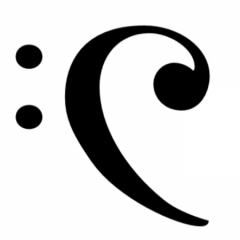When do you use inserts: for distortion, EQ, compression, chorus, flanger, phaser.
When do you use sends: for reverb, delay.
When are there exceptions: any time you want 'm. You can use compression as a send effect to get something called parallel compression.
These are rules of thumb, and rules can and should be broken if you learn something from them.
Chorus (or plain old oscillator detuning) can make the sound wider, but at the same time it can get weaker, because it's cancelling itself out in terms of phase. Reverb lets a focused sound compete with a smeared copy of itself; naturally, when the copy gets stronger, the sound is less focused. You camouflage the transients.
In the end, all you're doing is controlling the ratio of dry and wet. Send effects aren't "better" in this regard. It's just that you start with 100% dry and sum a wet signal on top of that. Let's say you have 100% dry and 20% send; the total is 120%. 100% is 100/120*100 = 83% of that, so the signal is 100 - 83 = 17% wet.
This is effectively not different from using an insert effect and setting the wet/dry to 17% wet. The difference comes in once you start adding other tracks, because then you get something you can't do with insert effects. The other difference is that 20% on an insert is not the same as 20% on an aux send, so you'll indeed hear more of the dry signal.
"You have too much reverb" is an oft-heard complaint. Reverb is like MSG for the sound; it makes everything better. However, you usually don't notice that you're using too much of it.
You can use a reverb as an insert effect. The downside is that if you have two tracks and you use two distinct reverbs, it sounds pretty unrealistic; you can't have one instrument sounding like it was recorded in a small tiled room and another in a concert hall. That ruins the illusion. If you use exactly the same reverbs, they may still mismatch, because the result of two dry instruments playing in the same room is not identical to summing two instruments each playing in their own room.
What aux does, effectively, is that it creates a submix. Let's say you have a dry mix of guitar, bass and drums. Drums are set to 100% volume. Guitar is set to 60%, bass to 80%. That is the mix that you hear.
With auxes, you can make the mix completely different; on an aux you create a duplicate of the mix that may be set to guitar 100%, bass 40%, drums 20%. That is the duplicate mix that you send to an effect (any kind of effect). The effect will "hear" that mix completely different from how you're hearing it. The end result is sent back to the mixer as if it were a single stereo track, and summed with the original. If you're using a reverb effect, the guitar's wet/dry mix may be a lot stronger than that of the drums, but since everything is still in the same "room", it'll do more to suggest positioning (i.e. how close to the microphone was the instrument). Panning is in that sense not different from any effect.
Experiment! Keep things simple initially; just a few tracks. Try all combinations. You'll learn a lot.





